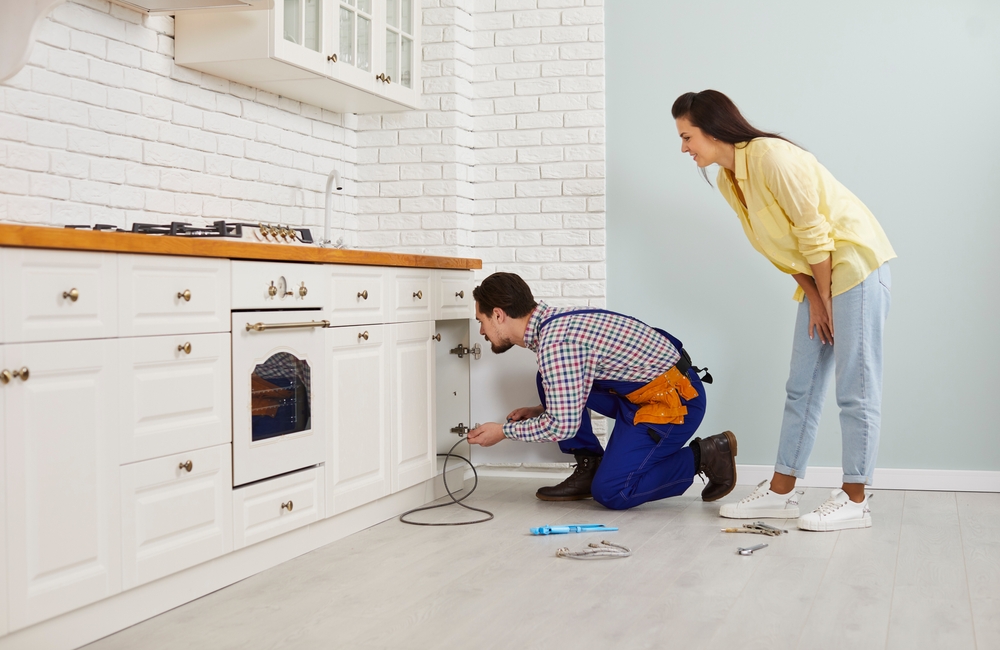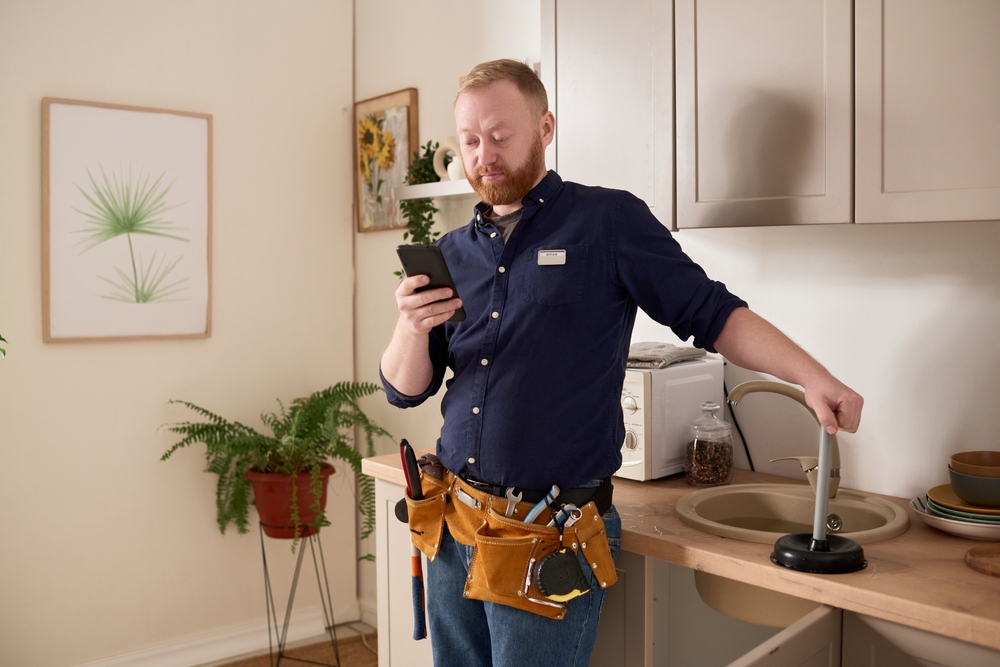Sewer Line Repair and Replacement: A Comprehensive Guide
A broken sewer line is one of the scariest things that can happen with home repair. These important lines take waste water from your home to either the sewer system or a septic tank. When they fail, they can cause bad smells, dangerous sewage problems, and huge repair bills. We will talk about all the details of sewer line repair and replacement in this in-depth guide. We’ll talk about common issues, warning signs, ways to fix things, choices for sewer line repairing and replacement, and important ways to keep them from happening. When this is over, you’ll know how to properly fix problems with your sewer line.
Understanding the Sewer Line System
Let’s talk about how sewer lines work before we get into fixes and replacements.
What is a Sewer Line?
There is a pipe called a sewer line that takes waste water away from your home. It links to either a septic tank or the city’s sewer system. This system is very important to understand because it is a big part of your home’s plumbing. To make sure that all of your wastewater is properly removed from your home, the sewer line must be working properly.
Types of Sewer Lines
Sewer lines can be constructed from several materials, including:
- PVC (Polyvinyl Chloride): This is a popular choice because it lasts a long time and doesn’t rust. PVC lines are light and simple to set up.
- ABS (Acrylonitrile Butadiene Styrene): Almost the same as PVC, but usually stronger and easy to install. Because it is strong, ABS is often used in home uses.
- Cast Iron: It is known to last a long time, but it can rust someday. People say that cast iron pipes last for decades, but as they get older, they might need to be replaced.
- Clay: Often found in older homes, but it’s easy for it to crack and break. Clay pipes used to be very popular but aren’t seen as much these days.
- HDPE (High-Density Polyethylene): A flexible choice that is being used more and more for fixes that don’t require digging. Corrosion doesn’t affect HDPE lines, and they last a long time.
Each material has its own pros and cons that can affect the choice of whether to fix or replace. It’s important to think about things like the dirt, local rules, and the needs of your plumbing system when picking a sewer line material.
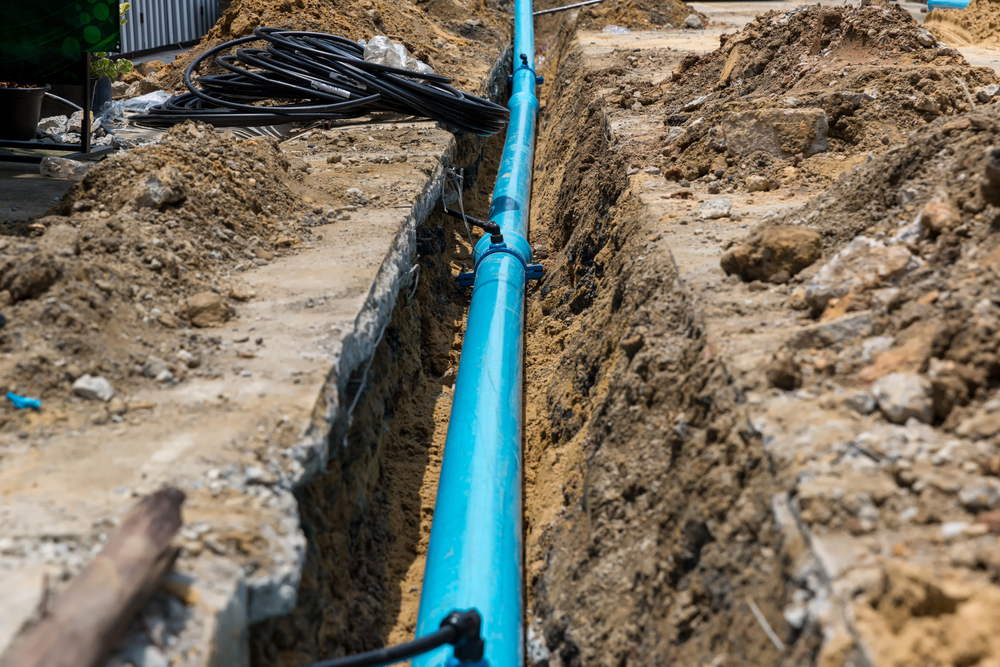
Common Sewer Line Problems
Understanding common sewer line problems can help you identify issues before they escalate. Here are some frequent culprits:
- Clogs: Getting clogged is one of the most regular problems with sewer lines. Clogs happen when trash, grease, or tree roots get in the way of wastewater flow. They can cause drains to back up, pipes to break, and drainage to slow down if they are not fixed quickly. From the main stack to the side lines, clogs can form in different parts of the sewer line.
- Tree Root Intrusion: To stay alive, tree roots need to find water. Roots may get into your sewer line and stop it if it is cracked or damaged. This issue can get really bad because tree roots can spread and hurt the lines even more. It’s important to know what kinds of trees are near your house because some species are more likely to get into sewer lines.
- Cracks and Breaks: Sewer lines can get cracks or breaks over time. These can happen when the ground moves, the temperature changes, or there is rust. If lines are cracked, wastewater could leak into the ground, which is bad for the environment. If your sewer line is broken, your yard may also have sinkholes or settle unevenly.
- Bellied Pipe: A bellied pipe is formed when a part of the sewer line sinks because of earth erosion or heavy loads on top of it. This makes the pipe sag, which traps garbage and causes clogs to stay in place. Bellied lines can be found before they cause big problems by inspecting them regularly.
- Corrosion: Metal pipes, like those made of cast iron, can rust. Corrosion can weaken the pipe over time, which can cause it to leak or break. Some chemicals, like hydrogen sulfide, that are found in garbage often make this problem worse.
Signs of Sewer Line Issues
Identifying sewer line problems early can save you time and money. Here are some telltale signs of sewer line issues:
- Slow Drains: If multiple drains in your home are slow, it could indicate a sewer line problem. This may mean a clog is forming somewhere in the system. Slow drains in different areas of your home can often signal that the main sewer line is affected.
- Foul Odors: Unpleasant sewage odors around your home or yard often indicate a sewer line leak. If you notice these smells, it’s crucial to act quickly. Sewer gas can be harmful, so addressing leaks promptly is vital for health and safety.
- Sewage Backup: Sewage backups are a serious issue. If sewage backs up into your home, it is essential to call a professional immediately. This can pose health risks and lead to extensive property damage. Sewage backups can occur in sinks, bathtubs, or even toilets.
- Unusual Sounds: Gurgling sounds in your plumbing can indicate a problem with the sewer line. These noises often arise from air escaping through clogs. If you hear strange sounds coming from your pipes, it may be a sign of a blockage.
- Wet Spots in the Yard: If you notice unusual wet spots in your yard, especially near the sewer line, this could indicate a leak. This is often accompanied by a lush patch of grass, indicating excess moisture. Wet spots may also lead to a foul smell, further indicating a sewer line problem.
Assessing the Damage
As soon as you notice problems with your sewer line, you need to check out the damage. These are some ways that professionals look at the situation:
- Video Inspection: A small camera is used in a video check to look inside the sewer line. This helps professionals figure out exactly where the problem is and what kind of problem it is. It’s an easy way to get specific information about the condition of the pipes without breaking them. Video checks are great for finding clogs, cracks, and tree roots that are getting into the system.
- Physical Inspection: In some situations, experts may do a physical check. To do this, parts of the sewer line have to be dug up so that damage can be seen for itself. This method is more invasive, so it’s usually only used for very bad cases. If major damage is thought to have happened, like a pipe collapsing, a physical check may be needed.
- Soil Testing: Soil tests may be done if tree root intrusion is thought to be happening. This helps find out how big the roots are and if they’re getting in the sewer line. Tests of the soil can also show how the conditions of the earth might affect the sewer line.
- Pressure Testing: To do a pressure test, water is pumped into the sewer line to look for leaks. Professionals may keep an eye on the pressure to see if it drops, which would mean there is a leak in the system. This method can help you find trouble spots that need to be fixed or replaced.
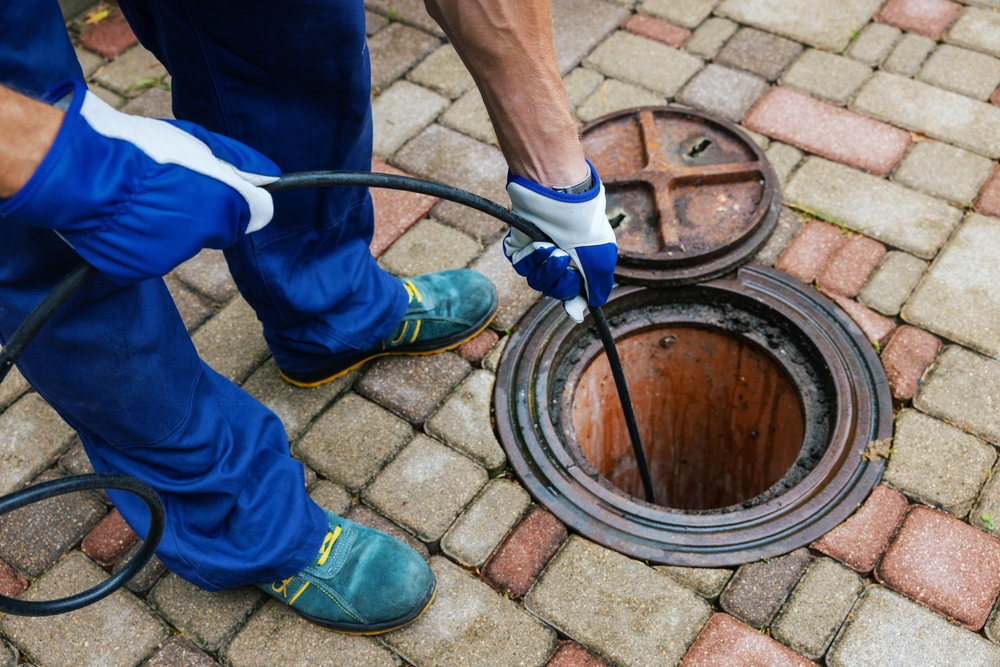
Repairing Sewer Lines:
When problems happen, fixing them quickly is very important. There are different ways to fix sewer lines, depending on the problem. Let’s look at a few of the most popular methods:
- Drain Cleaning: Cleaning out the drain is usually enough for small clogs. Pros use special tools, like hydro-jetting, to get rid of buildup and debris in the lines. High-pressure water jets are used in this method to clear out clogs without hurting the lines. Cleaning out your drains on a regular basis can help keep your pipes in good shape and stop future clogs.
- Pipe Relining: Relining pipes is a way to fix broken pipes without digging a hole. A resin-coated liner is put into a broken pipe and sets inside the pipe, creating a new pipe inside the old one. This method is less invasive and usually saves more money. Pipe relining can usually be done in just one day, so it won’t cause too much trouble for you.
- Spot Repair: Spot repair may be enough if the damage is limited to one area. To do this, you have to dig up and replace only the damaged part of the pipe. This method usually works faster and costs less than full repairs, and it doesn’t cause as much damage to your yard.
- Traditional Excavation: In the worst situations, standard excavation might be needed. To fix broken parts, this means digging up the whole sewer line. This method works, but it takes a lot of work and can damage greenery. It might be the only choice for lines that are badly damaged.
- Trenchless Technology: Repairing sewer lines has become much easier thanks to trenchless technology. This method requires very little digging and messing around. To replace or fix lines without having to dig a lot, professionals use special tools. This choice is better for the environment and can save you time and money. Without digging trenches, you may also be less likely to damage nearby buildings or greenery.
Replacing Sewer Lines
When fixes are no longer possible, the sewer line needs to be replaced. These are the steps that are usually taken to change something:
- Assessment: Before replacement, professionals conduct a thorough assessment. They determine the extent of the damage and the best sewer line replacement method. This often includes video inspections and soil testing. Understanding the specific issues will guide the choice of materials and methods.
- Permitting: Permits are usually needed to repair sewer lines. Before moving forward, professionals will get the appropriate permissions from the local government. This makes sure that the building rules and codes in the area are followed.
Digging: For standard replacements, the old sewer line has to be dug up. To do this, the old lines have to be dug up and thrown away properly. Professionals will do their best to keep your yard as unaffected as possible, and they will clean up after themselves.
- Installation of New Pipes: After the old line is taken out, the new pipes are put in. This could mean using PVC, HDPE, or some other good material. The rules and conditions of the land in the area often affect the choice of material. The new lines will be properly aligned and secured by professionals.
- Backfilling: The trench is filled back up with dirt after the new lines are in place. Professionals will pack down the dirt to keep it from sinking. This is a necessary step to fix up your yard and keep problems from happening again.
- Inspection: The last step is to make sure the new sewer line is working properly by inspecting it. This could include checking everything on video to make sure everything is okay. Once you get the go-ahead, you can rest easy knowing that your sewer system is stable.
Preventive Measures
It is always cheaper to avoid sewer line problems than to fix them when they happen. Here are some good ways to keep your sewer line in good shape:
- Regular Inspections: It is very important to have professionals check your sewer lines on a regular basis so that problems don’t get worse. Regular checks can help find clogs, cracks, and other problems early on. Depending on where you live and the rules in your area, you might want to have inspections every couple of years or after major weather events.
- Avoid Flushing Inappropriate Items: Watch out for what you flush down the toilet. Things like paper towels, toilet paper, and food trash should not be flushed. These things can damage your sewer line and cause clogs. Teaching your family the right way to dispose of trash will help you avoid problems.
- Maintain Trees and Landscaping: Keep an eye on the health of the trees and plants close to your sewer line. Tree roots can get into sewer lines and do a lot of damage, so if you see signs of this happening, you might want to get a professional to look at it. You may need to cut the roots back or find other ways to landscape that won’t affect your plumbing.
- Use Enzyme Cleaners: Using enzyme-based drain cleaners on a regular basis can help keep your sewer line healthy. These cleaners get rid of organic waste and keep pipes from getting clogged. Enzyme cleaners are better for the environment and your pipes than chemical cleaners. Use them every so often to keep your lines clean.
- Know the Signs of Trouble: It’s important to be on the lookout for signs of sewer line problems. Get in touch with a professional right away if you notice slow drains, bad smells, or strange sounds. If you take care of small problems right away, they won’t grow into big headaches.
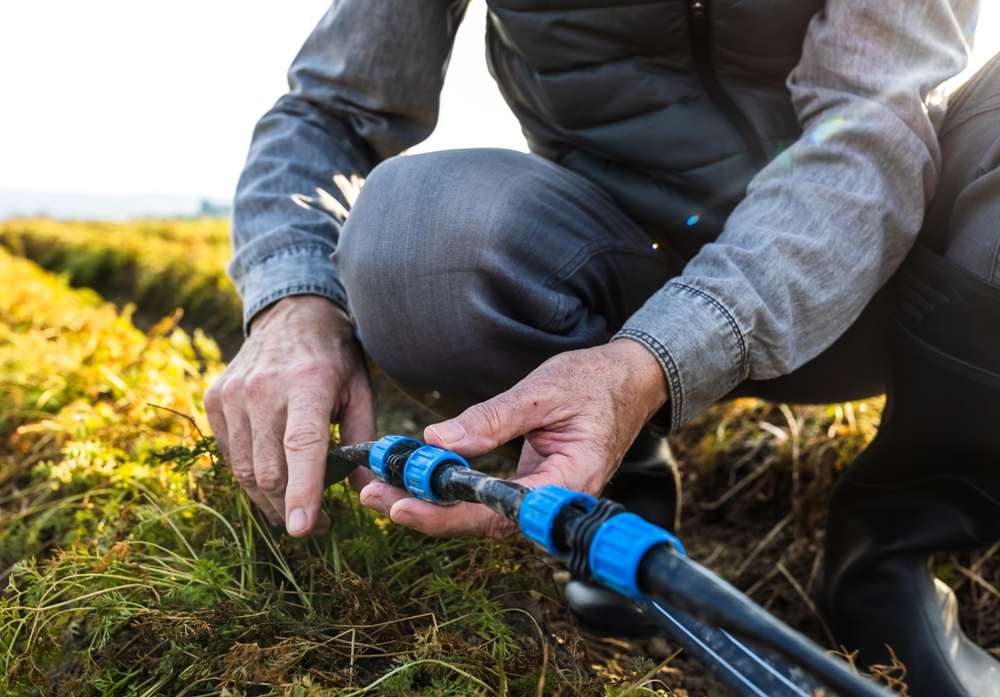
Conclusion
Dealing with sewer line problems can be stressful, but as a homeowner, you can feel more in control if you know about the most common issues, how to fix them, and how to keep them from happening in the first place. It is very important to know when to call a professional for sewer line repairing, whether you have clogs, breaks, or tree roots getting into your pipes. You can keep your sewer line system in good shape and keep your home safe from disasters by being cautious.
Don’t wait for the problem to get worse if you think there is a problem with the sewer line. Get an inspection today by calling a skilled plumber. You can save a lot of time, money, and stress in the long run by acting quickly. The plumbing in your home is very important to how it works, and keeping it in good shape will give you peace of mind. Putting sewer line upkeep at the top of your list is an investment in your home’s health in the long run.
Plumbing Services CA
https://maps.app.goo.gl/31Yt4rhDrainzNJ4A
(279) 203-0765
https://plumbingservicesca.com/

